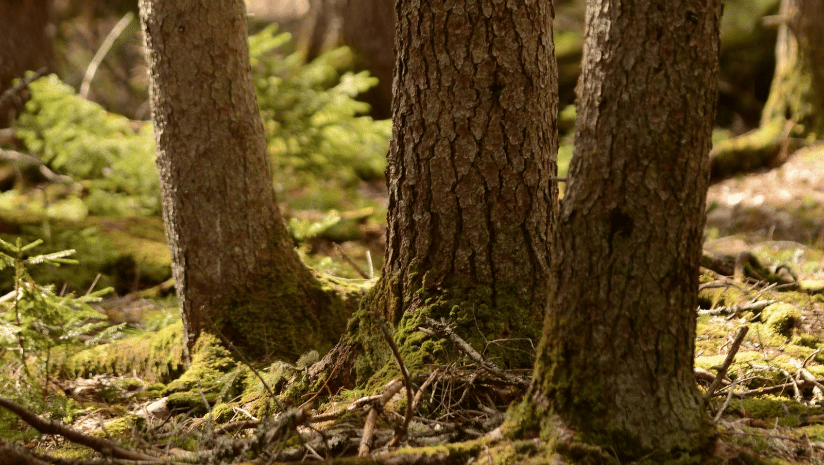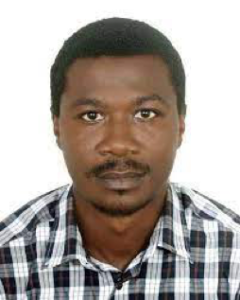
INSPIRES Student Feature: Kingsley Wiafe-Kwakye
 With a background in Geographic Information Science (GIS), data processing, and data analysis, Kingsley Wiafe-Kwakye has found a graduate program that perfectly aligns with his interests. Wiafe-Kwakye is a second-year Ph.D. candidate in Spatial Information Science and Engineering at the University of Maine, as well as a graduate teaching assistant in the School of Computing and Information Science.
With a background in Geographic Information Science (GIS), data processing, and data analysis, Kingsley Wiafe-Kwakye has found a graduate program that perfectly aligns with his interests. Wiafe-Kwakye is a second-year Ph.D. candidate in Spatial Information Science and Engineering at the University of Maine, as well as a graduate teaching assistant in the School of Computing and Information Science.
Co-advised by Kate Beard-Tisdale (a professor in The UMaine School of Computing and Information Science) and Torsten Hahmann (an associate professor in The UMaine School of Computing and Information Science), Wiafe-Kwakye has been a research assistant in Beard-Tisdale’s GIS Lab for the past two years as well as Hahmann’s Spatial Knowledge and Artificial Intelligence Lab (SKAI) for the past year.
Through the NSF-funded INSPIRES project, Wiafe-Kwakye is part of a team that’s creating a Digital Forest, which is a resource for integrating forest data from diverse sources to enable complex analyses as well as to support forest domain hypothesis formulation and testing. Wiafe-Kwakye is developing the ontology (or in other words, the terminology) to represent the forest data such as the terrain and bioclimatic conditions for different tree species, for this Digital Forest.
Wiafe-Kwakye explains, “I’m forming clusters of forest regions so we can find out if similar clusters have similar characteristics—what are the variables they have in common and what variables correlate with which phenomena—in terms of forest composition—based on observations. For instance, Theme 1 of INSPIRES is producing sensors which will be deployed into various places. The aim is to see if we’re able to identify places with similar characteristics to maximize data collection efforts.”
By maximizing the deployment of sensors, the researchers ensure that the sensors capture all of the various types of clusters available in the forest regions, each representing a unique place for sampling data. Wiafe-Kwakye and project team members will then use this data from the “original” forest in order to create the Digital Forest.
Beard-Tisdale adds, “The aim of the Digital Forest is an integrated digital view of several variables that influence forest characteristics and distribution of species. Wiafe-Kwakye has integrated terrain, soil, geological, and climate characteristics represented as an ontology. So essentially what we have are what might be called eco_units covering the landscape. With these, the intent is to support questions/analyses such as are certain species more prevalent, are certain types of eco_units?”
Wiafe-Kwakye’s true interest is working with data, and INSPIRES provides him the opportunity to work with large volumes of data bases in Hahmann’s SKAI Lab, especially graph data bases. The main challenges for Wiafe-Kwakye are data and data sharing, since data comes in different forms and different formats. That’s where ontology methods can be used to handle Big Data, allowing the data to be shared and to make sense for people of diverse backgrounds.
Hahmann clarifies, “The aim of the Digital Forest is to use an ontology and knowledge graph as tools to automatically compute data-driven descriptions of different tree species that will be easily understandable by people. For example, we want to compute descriptions of what kind of terrain and bioclimatic conditions makes a good location for a specific tree species, such as ash or red spruce. Once the computational basis for the Digital Forest has been laid, it will enable a wide variety of uses: generating knowledge about where a species is likely to be found (and could be sampled), what species are most suitable for planting now in a specific location, or to identify locations with similar forest composition or with gaps in sampling.”
Apart from Wiafe-Kwakye’s direct role in INSPIRES, he likes the team science aspect of the project. “I get to interact with people of different backgrounds and also with students from two other universities in New Hampshire and Vermont, which is really an enlightening experience,” says Wiafe-Kwakye.
“I like the structure of the whole INSPIRES theme: accomplished professors with early career researchers, and then students. It’s like information flow; I think it’s really exciting.”
